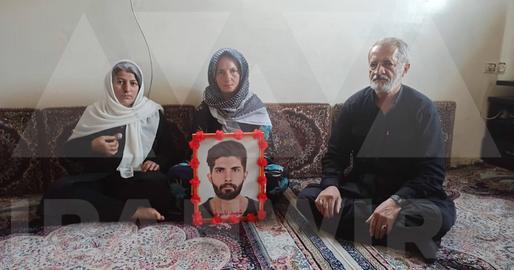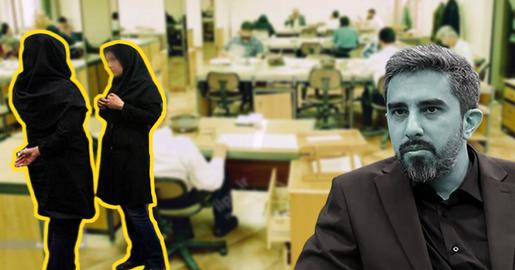The shrine of Esther and Mordechai in the biblical city of Ecbatana, or Hamedan in today’s Iran, was set on fire by person unknown on Thursday, May 15,: the anniversary of Israel's Declaration of Independence.
As of now, there have been no reports of any arrests. The state-run Islamic Republic News Agency (IRNA) reported that CCTV had captured the image of a person attempting to take “certain actions” but not succeeding. Six days later, the identity of this person is still unknown.
The attack on the shrine of Esther and Mordechai has been covered by both domestic and international media, and has once again brought forward the issue of antisemitism in Iran and those institutions of the Islamic Republic that actively promote religious hatred.
The first-degree defendants in this case are Iran's religious and political institutions, including the paramilitary Basij Organization, a branch of the Revolutionary Guards. Since 2010, the Student Basij, an offshoot of the Basij Organization, has publicly threatened the shrine at least twice.
In 2010, in response to Israeli actions in Jerusalem, Hamedan’s Student Basij organized a rally outside the shrine and threatened to destroy it. Arguing in a statement that Esther and Mordechai “ordered the massacre of 77,000 Iranians in one day,” they called for the shrine to be removed from the list of Iran’s heritage sites. They added: “We, the student Basij, warn that if Al-Aqsa Mosque [the Temple Mount] is violated in any way, we will destroy the tomb of these lowlife murderers."
On February 7, 2020, the Student Basij of Hamedan universities issued another statement warning that if any action was taken towards implementing the “Deal of the Century”, President Trump’s recently-announced peace plan for the Middle East, they would convert the shrine into a Palestinian consulate.
The organization has also described the prospect of setting the shrine on fire as a “scenario”, asking Hamedan’s judiciary to indicate what the consequences of such an action would be. The Student Basij has denied it had any hand in the recent attempt to burn down the shrine but reiterated that it is still ready to turn this Jewish site of worship into a Palestinian consulate.
According to the Bible, Esther, the Jewish queen of the Persian King Xerxes (486–465 BC), and her uncle Mordechai, succeeded in foiling a plan by the king’s vizier Haman “to destroy, kill and annihilate all Jews, young and old, infants and women, in a single day”. Their success is celebrated every year on the Jewish holiday of Purim. But religious zealots in Iran reject this story and have tried for years to interpret the story of Esther and Mordechai as a “holocaust” against Iranians. Their interpretation has no historical basis but Shia zealots cling to it nonetheless.
For years, the Student Basij, state media outlets and religious figures associated with the Iranian regime have played on anti-Israel sentiment to present Esther and Mordechai as “murderers” of Iranians. The distorted version of this historical event allows them to sow hatred not only against Israel, but also against the Jews. For the past 40 years it has been propagated in religious circles and fed to teenagers and young believers who do not know better. The recent attack on the shrine in Hamedan is most likely an outcome of this propaganda effort.
Jews are Not the Only Victims
These powerful actors have sown hatred among young Shias not only against Jew,s but also against other religions and even Sunni Muslims. The aggressive public stance of Hamedan’s Student Basij is just one example of the results. There have been other consequences of this religious hatemongering, including religious minorities' cemeteries and sacred sites being set alight, vandalised and destroyed, or shut down.
In 2017, Khalid Nabi Cemetery in the province of Golestan, where a pre-Islamic prophet is believed to be buried, was damaged and set on fire. But the culprits were never identified or arrested. “This might be the action by opponents of tourism,” said Mohammad Hamidzadeh, president of the historical site's board of trustees.
In 2016, after the new offices of Yazd City Council opened on the site of an abandoned Zoroastrian temple, then-council president Hojatollah Abbas Zare Garizi was captured on video trying to destroy a Zoroastrian symbol inside the building. This happened even as Sepanta Niknam, a Zoroastrian, was a member of the City Council of Yazd: a city with a sizable population of Zoroastrians. His name had made headlines when a court ruled that he could not be a member of the council because he was a Zoroastrian. The Guardian Council upheld the ruling but, eventually, the Expediency Council overruled both the court and Guardian Council and Niknam returned to his seat, concluding a shameful episode of religious discrimination in Iran's recent history.
These are just a few examples of discrimination and harassment of religious minorities in Iran. The Iranian constitution recognizes these minorities and officials of the Islamic Republic claim that they respect them and their rights, but unfortunately, the reality is very different.
Related Coverage:
Police Investigate Fire at Sacred Jewish Site in Iran, 16 May 2020
Iranian Official: Sacred Jewish Site Undamaged in Fire, 17 May 2020
40 Years of Discrimination Against Christians, Jewish People and Zoroastrians, 13 August 2018
Zoroastrian Returns to Yazd City Council, 23 July 2018






























comments